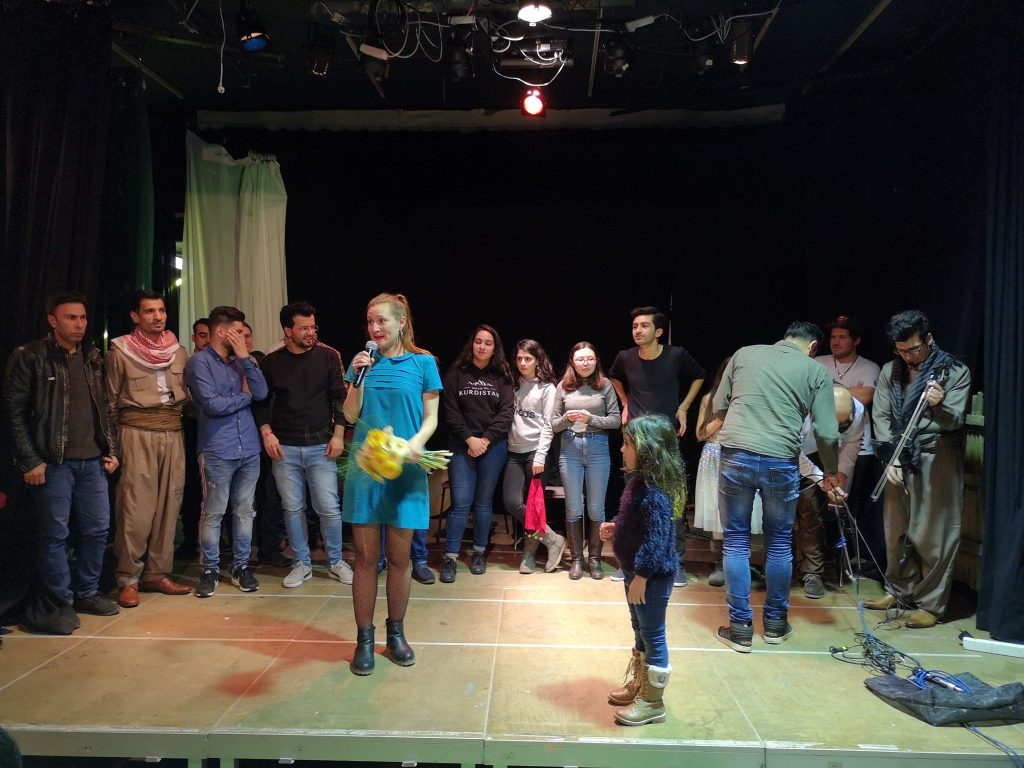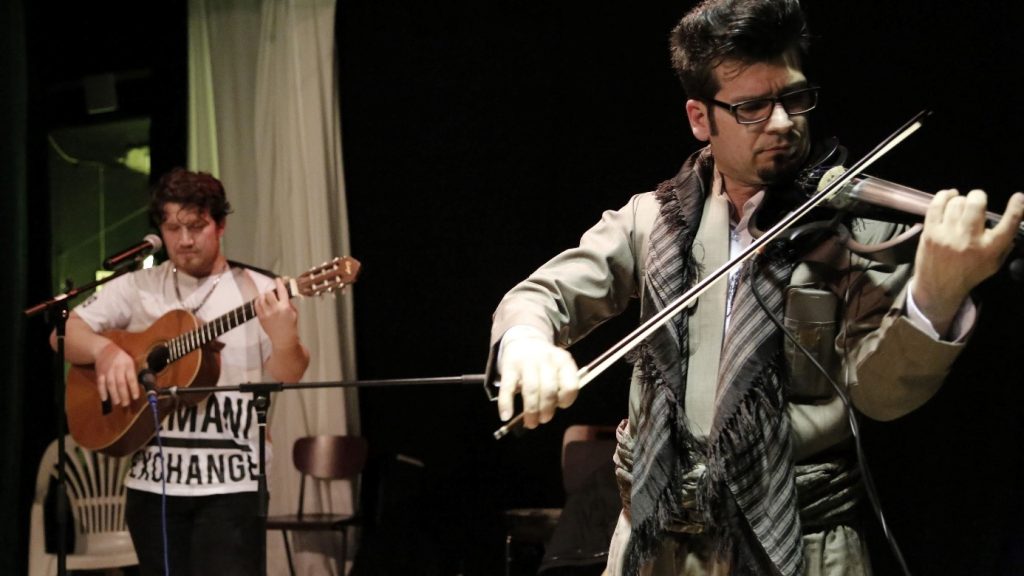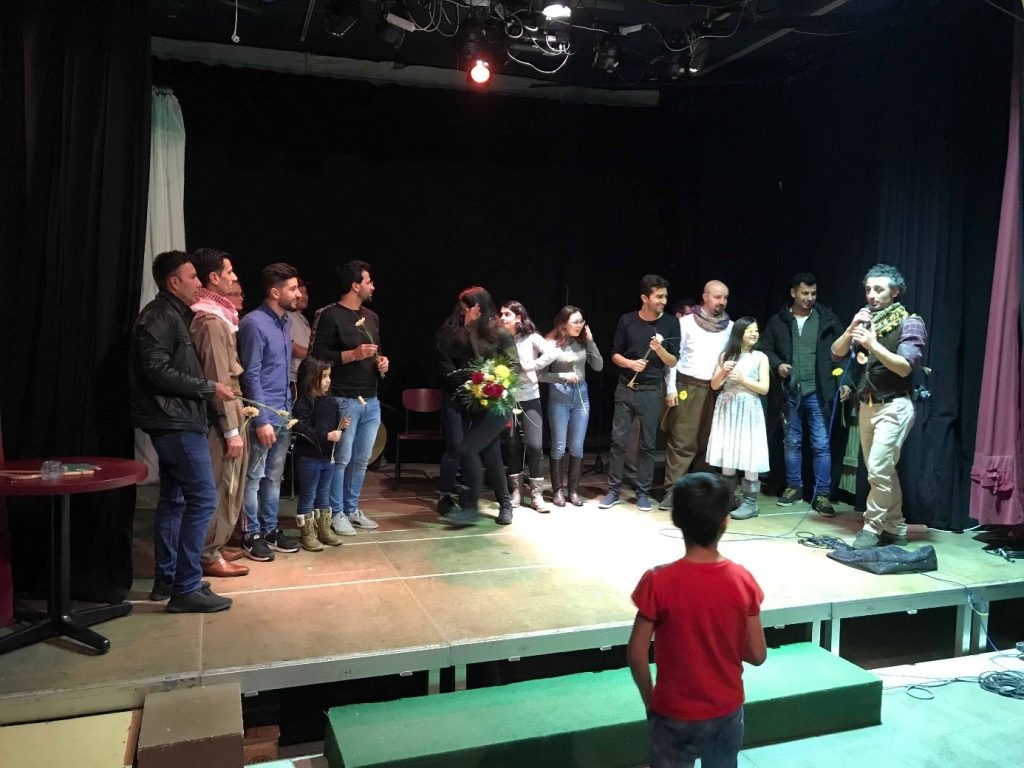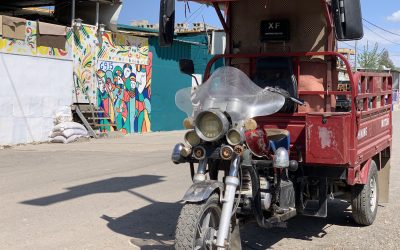Kashkul Project – Leipzig

| Culture, Diversity, Music, Dance, Social Inclusion |
The Project was funded by Robert Bosch Foundation.

General Information About Project
| Donor | Robert Bosch Stiftung |
| Period | 01.08.2018 – 30.01.2019 |
| Number of Participants | 12 (Tanzgruppe); 120 (Besucher der Abschlussfeier); 10 Musiker |
| Number of Activities | 19 Einheiten |
| Coordination and Public Relations | Anne-Sophie Krys |
| Dance Trainer | Mari Tosun |
| Filming of The Dance Event | ShirwanQasim |
| Editing the video footage | Dominique Kauer, Jamie Bowcock |
| Flyer | Alexander Brad / Riso Club Druckerei |
| Cooperations | Mühlstraße e.V, Die Villa, Meyda Volkshaus Nürnberg, |

Project Background
The Kashkul Leipzig project was developed by DOZ e.V. and funded by the Robert Bosch Foundation as part of the foundation’s federal program “Yallah, Muslim Engagieren Sich”.
Our intended goals with the Kashkol project were to develop acceptance and tolerance in the area of religion and culture among participants of Kurdish and non-Kurdish origin in a context of opening up German society due to increased immigration in recent years. An important aspect of the project was to show the openness of Kurdish culture through dancing.
We wanted to convey the diversity of Kurdish-Syrian culture through music and dance.
It is also about developing confidence in their own skills and self-confidence through the performance of the participants, no matter what faith one has.
Brief Description of The Project
We planned to focus on three important points of Kurdish culture: the dance, the music, and the women’s handicrafts.
Every week, between August and December, the dance group was to be trained by a professional Kurdish dance teacher, just as the music group was to be trained by a professional Kurdish music teacher. The goal was for the dancers and musicians to develop a performance together. The project Kashkol was connected with the project “Sport against Extremism – DOZ Liga Leipzig 2018” in the conception. During the reward day of the DOZ Liga 2018, which was to be held at the end of September, the music and dance groups should have performed after the awarding of prizes and shared the results of the work done with the audience during a show. Between the end of September and December, the trainings continued.
The women’s handicraft group was to and should have made handicrafts (such as traditional crowns with beads) twice a month, supervised by women experienced in handicrafts.
Project Progress
The Kashkul project was approved in August, so we could start implementation in September.
First, flyers and posters were developed by the designer Alex Brad. With his work we focused on the acquisition of participants. We activated the network of our association and also started an online campaign.
From the end of September we started to train every Saturday from 14:00 to 16:00 in the Mühlstraße e.V.. At the beginning of November our dance group was complete.
In January we even trained twice a week (Mühlstraße e.V / Die Villa ) to prepare our cultural closing party.
The Kurdish folk dances are largely accompanied by a davul (big drum) and zirnê (flute). The dance group trained with the live music in January.
A beautiful energy developed during the trainings, so our dance group even chose a stage name: KOMA-Leipzig. Koma means group in Kurdish Kurmanci.
The Kurdish dance evening (the closing ceremony) was successfully held in the barn in Stötteritz (Leipzig) on 26.01.2019. More than 120 people, including many families from Leipzig and other East German cities were able to celebrate together their joy and curiosity in dances, music and food from Kurdistan.
It was a pleasure to witness beautiful concerts by musicians from Leipzig, Halle and Chemnitz.
The Kashkol dance group Koma-Leipzig in the traditional costumes presented its four trained Kurdish dances – Delilo, Cacan, Chepik, and Baghir – accompanied by Davul and Zirnê to the audience.
Activities Implemented Under This Project
The Dance Training Sessions
| Date and Time | From 29.09.2019 to 25.01.2019 |
| Place | Mühlstraße e.V und Die Villa (Soziokulturelles Zentrum) |
| Participation | 12 participants with diverse countries of origin (various Kurdish countries, Germany, Kyrgyzstan, France) |
| Trainer | Mari Tosun |
| Agenda | Short Discussion Round (10 Minuten)Warming Up (10 Minuten)Training Session Without Music (30 Minuten) Break (10 Minuten) Training Session With Music (30 Minuten) |
| GelerhnteTänze | DeliloCacanChepikBaghir |













Closing Ceremony
| Date and Time | On 26.01.2019 from 17:30 to 23:00 |
| Place | Die Scheune, Gutshof Stötteritz, Leipzig |
| Artists | Kurdi Band (Konzert) Amjad Bakir (Konzert) Koma-Leipzig , Dahul and Zirnê-Player |
| Number of Attendees | 120 |
| Moderation | Abdulaziz Ramadan (Founder and CEO of DOZ e.V.) |
| Food and Drink Service | DOZ Members |
| Agenda of Event | 18:00 – 19:00: Concert19:00 -19:30: Dance19:30 – 20:30: Together Dance and Concert 20:30 – 21:30: Dinner21:30 – 22:30: Together Dance and Music 22:30 – Ende: Flowers Distribution and Group Open Dance |












The Media Work
The media work had two focal points: on the one hand, advertising and reporting on the project, and on the other hand, social media skills were to be strengthened among the participants.
| Work Achieved | 2 posters and 2 flyers were developed: One for participant acquisition and another for our graduation ceremony.Articles were published on our website. Management of a Whatsapp group with the participants Managing Kashkol events (trainings and graduation) on Facebook.The creation of a video about the graduation ceremony |

Monitoring and Evaluation of The Project
– Indicator 1: Reaching the target group
We had 12 participants, who were very different from the origin and their personal life paths (faith, education level, age, etc…). We had 2 Leipzigers, three Germans with Kurdish roots, four Kurds from different Kurdish regions, one Frenchwoman and one Kirghiz. All participants were between 17 and 33 years old.
We reached our target group.
The participants were diligent and reliable and hardly missed any classes.
- Indicator 2: Understanding between Muslim and non-Muslim participants
Just as the roots and origins of the participants were different, they also had different beliefs and political views. The project ran smoothly.
- Indicator 3: The dance and music groups can perform together.
They performed together and were also successful. The audience was enthusiastic.
- Indicator 4: Production of handicrafts that can be exhibited
Unfortunately, due to budget shortage we do not have the opportunity to implement this activity.
- Indicator 4: Communication outside the project
Our advertising campaign worked because the public showed up in large numbers
Lessons Learned from The Project „Kashkol-Leipzig“
- Network of dancers and musicians established
- Invitation for further performances in the Villa for Newroz in March and for the district festival in Stötteritz , Leipzig in June
- There is a great interest in traditional Kurdish events in Leipzig and the surrounding area






